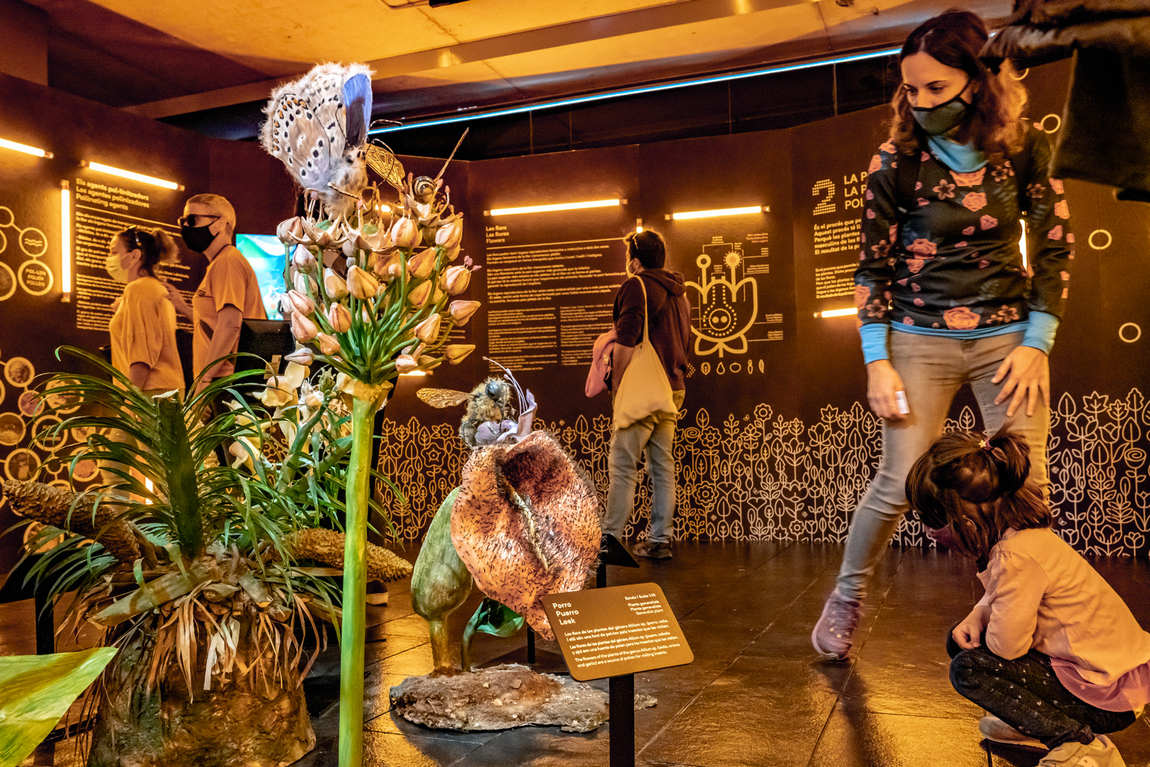Although you have to marvel at architectural design at every turn in Barcelona, the blue building of the Blau Museum deserves special attention. It looks like a giant aquarium or a model of a tectonic fault: not a bad find for a science museum. The museum is located in Fòrum Park, and you can learn a lot about the evolution of the planet Earth and life from its remote past to the present day. If your child has already wondered how life appeared on Earth, Museu Blau is the place to find the answer.

The building was opened on the occasion of the 2004 International Cultural Forum. In 2006, it was refurbished to open a science museum in it.
The leading exhibition of the Blau Museum is called 'Planet Life'. Thousands of exhibits explain how the solar system arose, how life appeared on Earth and how it evolved. Instead of the usual bright museum lighting, it's all darkness and only the display cabinets are illuminated. The exhibition's first section is called "Biography of the Earth", and interactive screens on the walls project videos on the formation of mountains and listen to the sounds of wildlife. Among the exhibits in this section, the skeletons of prehistoric animals are the most appealing to children.

The Earth Today section, the most significant part of the museum's permanent exhibition, tells you about the diversity of life on our planet. Stuffed animals help you learn about the subject: you can see a lion looking for prey and ants fighting. Exciting is the moving models: e.g., the springs allow you to understand how the muscles of a crawling snail work. You can get more knowledge at the Islands of Science if you need more knowledge. Is it possible to trace the origin of a species by its scientific classification? Can animals lie? How do evolutionary processes work? The answers to these and many other questions can be found with the interactive exhibits at the Islands.

Kids up to 6 years of age have their own "Science Nest" (open at weekends). Even playing in the sandbox here turns into an activity for little scientists. You can also touch a zebra or hold a rhinoceros horn, have an x-ray taken of a lizard or turtle, or look at microbes through a microscope.
In addition to permanent exhibitions, the museum offers rooms for temporary exhibitions, usually devoted to Earth sciences, natural history and scientific expeditions, an auditorium, a media library and a shop.
Note that the Museu Blau is only part of the Natural Sciences Museum in Barcelona. It also has museums in Citadel Park and the Botanical Gardens on Montjuïc Hill. If you are planning a trip to Barcelona with your child, visit at least one of the branches, and we guarantee your child will love what they see.











